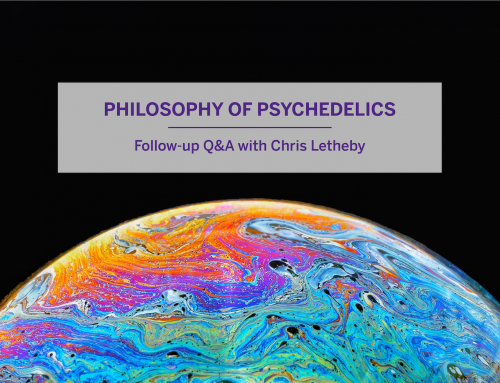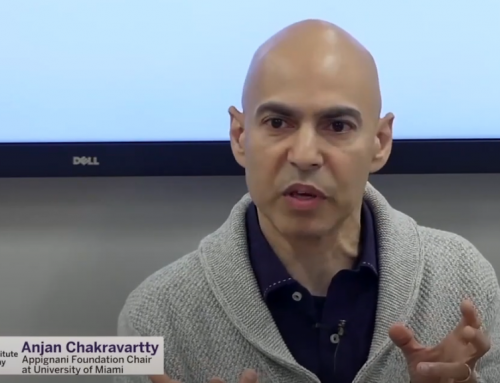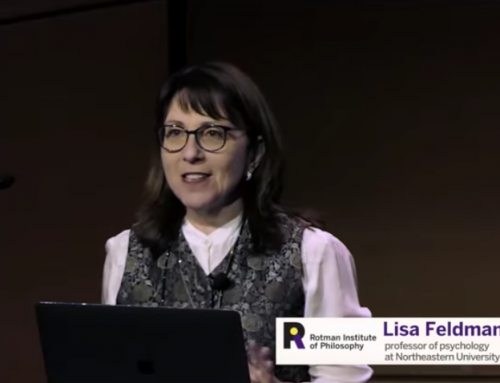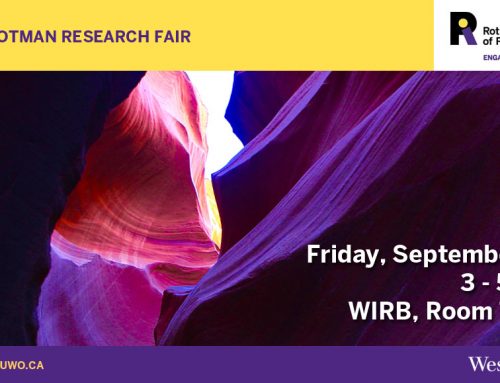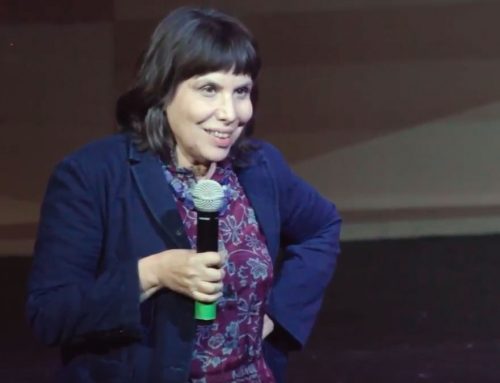ACMES 2, Computationally Assisted Mathematical Discovery and Experimental Mathematics, was a four day conference held on May 12 – 15, 2016 at Western University. Videos from the fourth day of the conference have been added to the ACMES 2 video playlist. Remaining videos from the conference will be available soon.
Computational Discovery, also called Experimental Mathematics, is the use of symbolic and numerical computation to discover patterns, to identify particular numbers and sequences, and to gather evidence in support of specific mathematical assertions that may themselves arise by computational means. In recent decades, computer-assisted mathematical discovery has profoundly transformed the strategies used to expand mathematical knowledge. In addition to symbolic and numerical computation, a new trend that shows tremendous potential is the use of novel visualization techniques. The current situation was well summarized by a recent ICMI study: “The latest developments in computer and video technology have provided a multiplicity of computational and symbolic tools that have rejuvenated mathematics and mathematics education. Two important examples of this revitalization are experimental mathematics and visual theorems.” The program and further details on the conference can be accessed on the ACMES website.
[embedyt] http://www.youtube.com/embed?listType=playlist&list=PLkMaaEPd7InL_hWKXk_uBWJ675V0t5Jno&v=F-ZYCYguBSY[/embedyt]
Johannes Middeke: Using Computer Experiments as Guidelines for Symbolic Linear Algebra
In our recent project we have tackled the surprisingly frequent occurrence of common row factors in Bareiss’ fraction-free algorithm for matrix LU decomposition. We used computer experiments to first confirm the existence of those factors and then to gain an idea about how they arise. We applied similar methods to the fraction-free QR decomposition. In this talk, we discuss our approach to incorporate experimental methods in finding rigorous proofs.
Enver Ozdemir & Gözde Sarikaya: A Primality Test Algorithm
Prime numbers are the main ingredient of the cryptosystems such as RSA, Elliptic Curve Cryptosystem etc. The critical aspect of RSA is the difficulty of factorization of large integers that have several hundred digits. It is not always easy to construct such large integers with large prime factors so that factoring is hard for these numbers. The first task is to determine the primality of an integer. One of the primality test algorithms that is being used in practice, Miller Rabin test, guarantee compositeness of most integers but it may fail to determine the compositeness of some. In this work, we test a conjecture by S. Ling et.al which adds a single condition to strong pseudoprime test to base 2. The test we conducted gives clues to pattern of strong pseudoprimes to base 2 and explains why the strong pseudo prime test base 2 with the additional condition catches all composite integers. We have been able to show that the test catches all composite integers to 10^20. In this work, we explain the algorithm in details and present our observation of the computational tests. The observation will show that why the conjectured primality test is actually a primality test. The conjectured primality test has running time of O(log^2 n) and it uses singular cubics.
Daniel Lichtblau: Explaining biases in last digit distributions of consecutive primes
Recent work by Lemke Oliver and Soundararajan shows an unexpected asymmetry in distribution of last digits of consecutive primes. For example, in the first 10^8 pairs of consecutive primes, around 4.6 million end with {1,1} respectively, whereas more than 7.4 million end with {1,3}. It is not hard to show that his disparity is not explained by the fact that opportunities for the next prime come sooner for n+2 than for n+10. Which leaves open the question: what accounts for this sizable bias? In this talk I will give an explanation based on elementary theory and some amount of computation.
Kevin Hare: Some properties of even moments of uniform random walks
We build upon previous work on the densities of uniform random walks in higher dimensions, exploring some properties of the even moments of these densities and extending a result about their evaluation modulo certain primes.
Matthew Skerrit: Extension of PSLQ to Algebraic Integers
Given a vector $(x_1,\dots, x_n)$ of real numbers, we say that an integer relation of that vector is a vector of integers $(a_1,\dots,a_n)$ with the property that $a_1 x_1 + \dots + a_n x_n = 0$. The PSLQ algorithm will compute (to within some precision) an integer relation for a given vector of floating point numbers. PSQL is also known to work in the case of finding gaussian integer relations for an input vector of complex numbers. We discuss recent endeavours to extend PSQL to find integer relations consisting of algebraic integers from some algebraic extension field (in either the real, or complex cases). Work to date has been entirely in quadratic extension fields. We will outline the algorithm, and discuss the required modifications for handling algebraic integers, problem that have arisen, and challenges to further work.
Scott Lindstrom: Continued Logarithms and Associated Continued Fractions
We investigate some of the connections between continued fractions and continued logarithms. We study the binary continued logarithms as introduced by Bill Gosper and explore two generalizations of the continued logarithm to base b. We show convergence for them using equivalent forms of their corresponding continued fractions. Through numerical experimentation we discover that, for one such formulation, the exponent terms have finite arithmetic means for almost all real numbers. This set of means, which we call the logarithmic Khintchine numbers, has a pleasing relationship with the geometric means of the corresponding continued fraction terms. While the classical Khintchine’s constant is believed not to be related to any naturally occurring number, we find surprisingly that the logarithmic Khintchine numbers are elementary. For another formulation of the generalization to base b, we obtain finite termination for rationals and discover a theoretical recursion for building the analogous distributions. This is a joint project with Jonathan Borwein, Neil Calkin, and Andrew Mattingly
Rob Moir: Toward A Computational Model of Scientific Discovery
Traditionally in philosophy of science, the process of discovery of theories or hypotheses in science has been regarded as being non-rational and therefore not accessible to philosophical scrutiny. For Reichenbach’s famous epistemological distinction between the “context of discovery” (idea generation) and the “context of justification” (idea defense), it is the latter that is the focus of most philosophical scrutiny of science, and the former, in Reichenbach’s view, only insofar as objective judgements of inductive evidential support can be made.[1] Indeed, Hempel (1985) stated that automatic genera- tion of interesting scientific hypotheses by computer is impossible.[2] With the advent of advanced computing machines and superior AI, this dogma is now coming into question.[3] Many philosophers of science now challenge this traditional view, and promote rational views of scientific discovery by emphasizing distinct structure to the discovery process, such as methodological patterns, analogical reasoning, mental modeling and reconstruction by explicit computation.[4] The approach I propose, which I believe is novel, could be construed as a mixture of the approaches just listed. I suggest that from a direct examination of historical evidence we can abstract a discovery pattern based on key aspects of the actual methods used, a pattern potentially limited by the range of evidence considered. I shall argue that the existence of this pattern shows not only that discovery processes can be rational but that they can even display an important algorithmic component. I will briefly review three examples of the discovery of important theories in physics (in optics, electromagetism and QED) and show how, subsequent to the identification of an appropriate problem space given empirical knowledge of the phenomenon, they all follow a pattern of recursive search through a problem space to solve a kind of inverse problem (combined with a refinement or variation of the characterization of the problem space).[5] These instances of success of a computational search method in several landmark discoveries in physics suggests that a deeper examination of the computational character of the discovery process in the history of science is needed.
Jim Brown: Pure and Applied: The Mathematics-Ethics Relation
Philosophers of mathematics and working mathematicians distinguish pure and applied mathematics differently. Both distinctions are legitimate and useful in their ways. The mathematicians’ distinction has interesting similarities to ethics, which will be explored. This in turn leads to some interesting consequences, especially when it comes to how mathematical claims are justified: proofs, experimental computations, thought experiments, and so on.
Videos of all Rotman Institute of Philosophy events can be viewed on our YouTube channel. Subscribe to our channel to be notified whenever new videos are added.

